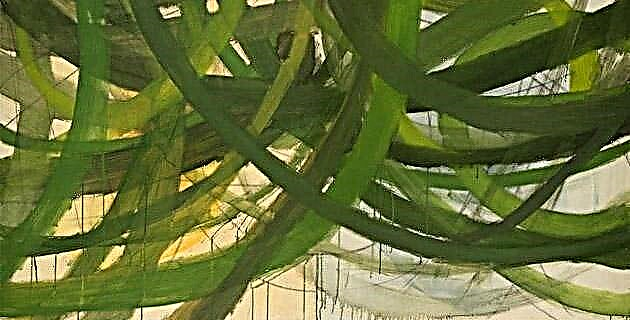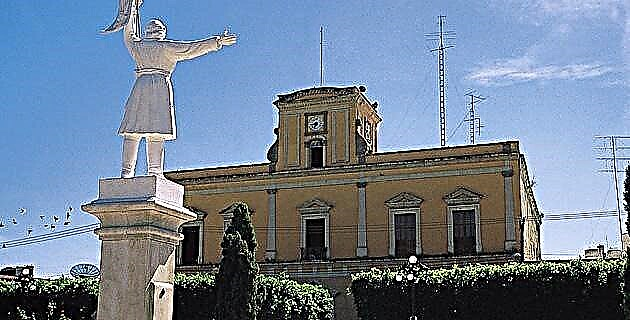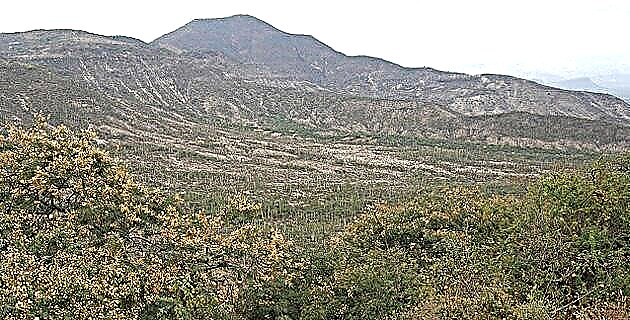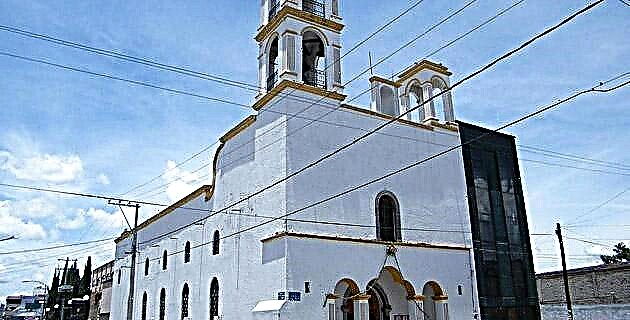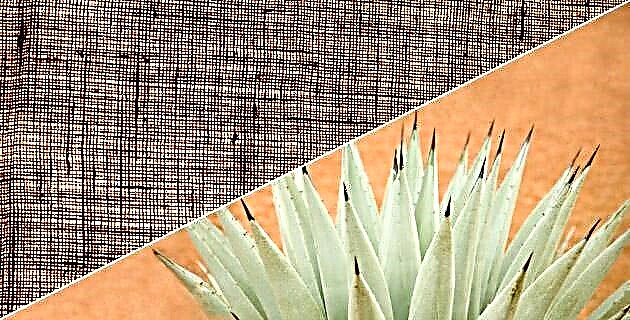
Within the limits of the Milpa Alta delegation, to the southeast of the Federal District, there is a town called Santa Ana Tlacotenco where it is still possible to find an artisan activity of our own: the production of ayates.
The ayate (Ayatlen in the Nahuatl language), a heritage of our ancestors preserved for many generations, is made with the fiber of the maguey called ixtle, which is obtained through a rustic and laborious process.
Although it may seem incredible, agricultural activity is still present in the life of the Tlacotenses and surrounding towns; For this reason, in many cases the inhabitants of this region have to make ayates before the harvest season approaches, where this peculiar canvas is used.
In times past, the ayate was used as a mechapal and spread on the ground, as a tablecloth in the field. Also, when it was heavily used and acquired a soft texture like a cotton cloth, it served as a towel to dry off after bathing.
A few decades ago you could still find a large number of people dedicated to the weaving of yachts, but today this number has been reduced so drastically that it has led to its almost total extermination. Today, in Santa Ana Tlacotenco there is only one person who is dedicated to this activity, and he was kind enough to share his experiences with us and show us how to make this peculiar garment.
Doña Sebastiana Tapia Salazar, a warm woman with skillful hands whose face reflects the passing of time, carries out her work with calm and dedication, and tells us about the process that must be carried out to make an ayate. She learned this trade with different people being a young woman of approximately 17 years old and she tells us: “I have not tired of cleaning stalks; it is a pleasure for me to do it and I dedicate myself to this job all year round. Depending on the number of orders, I weave up to four ayates a month, and I also weave backpacks for the planting season. When maguey stalks are scarce, I rest a bit, because people who do barbecue also cut them and take them away, leaving me without material. As for the sale, the large yachts are sold for $ 150.00, and the medium ones for $ 100.00, but the latter does not suit me because people are expensive to pay for the work ”.
There is a belief that Doña Sebastiana communicated to us: “when I have to weave the yarn, I don't do it on Tuesdays or Fridays because the people who taught me to weave said that these days the yarn gets tangled because it is used in large quantities , making it difficult to weave the ayate ”.
The ayate weavers, in addition to making this article, weave carved girdles for women, black girdles for men (using sheep wool for their manufacture) and ribbons with the tip adorned with beads that are used by women to stop their hair. in the form of a braid.
The arduous task begins in the field, collecting the maguey leaves at the end of its production of mead; The tender leaves that have been extracted from the heart of the plant are also collected when it is prepared for the production of the aforementioned liquid. These stalks are white in color, their fiber is very fine and they are shorter and thinner than the mature ones. Once at home, Doña Sebastiana makes a fire to toast the leaves over moderate heat so that they do not burn, and in this way soften the pulp and skin. When they are toasted, he folds them and arranges them one on top of the other so that they rest for about eight days, sprinkling them with water twice a day when it is hot season. This procedure serves to reduce the toxicity of the stalks, so that at the time of working them they do not irritate the hands and skin.
After the aforementioned time, the maguey leaves are ready because the pulp and peel have the softness required for handling. A board is then placed on the ground (the board is known by the name detlazimalhuapaletl) of the appropriate size to the stalks, and one by one they are cleaned by scraping them with a utensil called a piedrita (in Nahuatltlaximaltetl), which is a piece of wood with a embedded metal sheet, and thus little by little the pulp and the peel are separated, leaving free the fiber called ixtle, which at first is white but when it dries it acquires a yellow hue. Once the ixtle is obtained, it is immersed in water to wash it and remove the impurities that have become impregnated, and then it is put to dry if you do not want to work it immediately.
To obtain the threads, the ixtle is immersed in water and small portions are carefully pulled by hand until they form a continuous and long thread, which is put to dry on a loop like a clothesline. After this stage, the strand is twisted with the help of a winch (Malacatlen Nahuatl) to obtain thinner strands. This is achieved by turning the winch where small threads of ixtle are placed until the desired length is obtained, which will then be tangled into a ball approximately the size of a soccer ball.
To make an ayate the first thing is to weave the threads, which consists of carefully arranging them distributed in groups of five pairs making a set of 10 groups, which results in 50 pairs of threads, which are distributed and held in a wood called ohtlame. This same procedure is used to make backpacks, with the difference that fewer pairs of threads are woven.
The first part of the process is to weave two rectangular-shaped canvases called tlacohyatl, which are later joined to form a square; The already arranged threads are separated with a long and slightly wide splint called a zutzupastle, so that the paquitlcuatl with the thread passes through this space and in this way the fabric is formed. The width of this is marked by a rod called ohtate, which also serves to make the fabric firm and even; In turn, eljiyote has the function of separating the threads one by one and elhuyastlesseparates the threads of the fabric from one end to the other along with the jiyote. Another function of the zutzupastle is to lower the threads, giving them a certain tension, but as the fabric develops, there comes a time when the space between them is so dense that these utensils can no longer be used, and then needles are used to pass the thread. thread and a maguey pick to accommodate them. Once the two canvases are finished, they are joined by sewing them.
The inhabitants of this place designate these garments with different names depending on the size. For example, they call ayate made with fine threads; quimichayatlal ayate chico, yayahtomactleal ayate of work made with thicker threads. In addition, the ayate has different names depending on the use that is given to it: when it is tied by its four ends to carry a load on the shoulders it is called xiquipilli, and it is used in the corn harvest seasons to collect and load the ears between the grooves. In the Aztec numbering there is a number with the name dexiquipillique representing the amount of 8,000 and its graphic representation is of a bag with the mouth tied.
Regarding what was said in the previous paragraph, Mr. Inocencio Meza, a native of this place and defender of the Nahuatl language, has taken on the task of compiling historical information related to our culture and made the following comment:
"In pre-Hispanic times and until colonial times, the ayate had an important role within the Mexican legends, where it was affirmed the existence of people endowed with supernatural powers known as nahuales, a word that comes from the vocablonahuatzitzin, which means your secret or the secret; the nahuales had the facility to transform themselves into anything, whether animal or vegetable, and their main outfit consisted of an ayate, especially elahahpitzahuac, which had an ixtle ear; the elders said that this character was transformed on an ayate and with him traveled great distances at breakneck speed, returning to his place of origin with the ayate loaded with many things ".
Just as stories have been rescued and preserved in which the ayate is the protagonist, the tradition of making and using them also deserves to be preserved to avoid the loss of a garment that is part of the identity of Mexicans.
With the passing of the years and progress, most of the customs of the Tlacotenses have undergone radical transformations and the new products derived from oil are now used because they have a much lower cost. This means that the production of yachts is unaffordable and unappreciated, which is causing unemployment and the extinction of weavers and their products; However, the ayate, because it is made of natural fiber, is not part of the new polluting products, which, although cheap to obtain, are charging a high price to humanity, since they endanger the biological balance and therefore, life.
Source:Unknown Mexico No. 216 / February 1995


